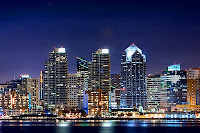Initially I set out on this project thinking about just one pair of words 'monochrome' and 'colour' as I wanted to try using these two closely related but opposites and somehow make it work. I think I archived this as I developed my dye skills and experimented a lot with creating black in the dye lab which was interesting, because even though the samples may not have been completely black and varied in shades of grey and blue. It expressed my intentions clearly, as I wasn't trying to archive black, but the dark colours that appear black.
Although I didn't get to join the machine embroidery workshop for this project I was flexible and changed my ideas only slightly, because I kept my original starting point of buildings and surroundings but developed it with the words I chose. My original start was going to be free machining the sketches and visual research that I collected and then further developed them, however I think through taking up intermediate dye I was able to fully explore the effects of different dyes on different types of fabrics more thoroughly. This is a useful skill and an experience that can be effectively applied to any future dyeing processes that I may come across.
I found it useful to look back at old samples and create links that may have not been obvious at first, because then I was able to see any ideas that would potentially be a specific topic, or skill that I like to continuously use. I would take this into account for my future projects as it is helpful if I'm ever struggling. Another task that I found refreshing was the Wild Card task, where we were challenged to incorporate possibly irrelevant images into our projects. Whilst I was completing that task it made me think about the second pair of words that I chose 'collapse' and 'build', because I felt that I was being too precious with my samples as I wasn't able to de construct them and reconstruct them to pursue these words. Eventually I changed that to 'regular' and 'irregular' after examining the quality and shapes in my tie dye samples. However I don't think I was able to fully explore the words as much as I wanted with sketchbook work as I chose these new words quite late on into the project.
One of the photographs that I took in the Wild Card task to show the partnership of irregular shapes I archived with starch resist dying and old gum stuck to the floor
It is almost second nature to me to have ongoing visual research to keep me inspired and give me ideas for my next sample. I also researched some dye techniques before I started my dye workshop, so I could get an idea of what I could do in the time I had in the dye lab. I found that valuable as it opened up thoughts of batik, the history of dye, and dye techniques. So I wasn't just limited to dying a piece of cloth a block of colour or for the sake of it. Even though we didn't use batik with hot dyes, the great alternate of starch resist dying in the Indigo vat created some interesting shapes that took on a large role in this project.
Creating colour charts was a new experience for me and I've never been very good with mixing exact colours, so this was good practice for me and I will continue to exercise this skill.
I find that if something is working well for someone in my group people tend to pick up on it, but only if it was something that could be generally applied to with their own work. However as people naturally interpret things in their own way, most of the time they have alternate results so our work is never the same. I think it is useful to be able to see other peoples work because it could influence any ones project and see ideas from an alternate view.
One of my peers influenced me to use the colours of blue and red in the style of 3D pictures for my blind contour sketches.



















